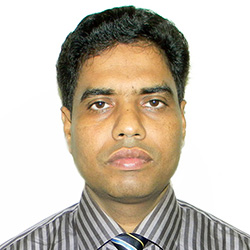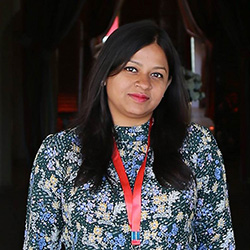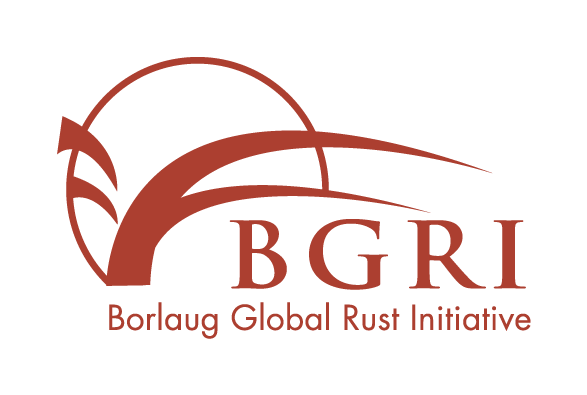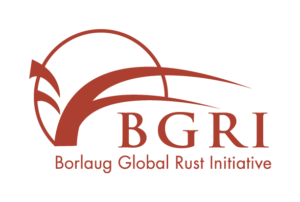Workshop Opening
Workshop Opening and Keynotes


Introduction
Maricelis Acevedo, DGGW, Cornell University, Department of Global Development

Keynote
COVID-19’s impact on agriculture
Theo De Jager, President, World Farmer’s Organisation
Gene Stewardship
08:30 EDT / 12:30 UTC
Moderator: Robert Bowden, USDA-ARS
- Breeder's Rights, Breeder's Responsibilities
- Creating a Wheat Disease Resistance Gene Atlas
- Collaborative Effort to Pyramid Disease Resistance Genes in Ethiopian Wheat Varieties
- Gene Stewardship Discussion
- Gene Stewardship Award Presentation
Breeder’s Rights, Breeder’s Responsibilities

Speaker:
Mary Guttieri, USDA-ARS
Abstract
Rapidly changing virulence patterns in cereal rust pathogens present both technical and ethical challenges to the global breeding community. Highly effective host plant resistance (R) genes, which require many years to discover, characterize, and deploy, can be rendered useless within a few years of commercial deployment. Considerations for addressing critical, near-term regional needs may contravene consideration for the long-term common good. Ethical questions surrounding gene stewardship are independently addressed by an array of public and private organizations with varying, and sometimes competing, interests. We propose the application of a genetic utility conservation ethic to R genes. The focus of this conservation ethic is on maintaining the utility of R genes. Conservation ethics integrate resource allocation, exploitation, and protection. Access to foundational plant genetic resources is widely considered a general right for all of humanity. Plant intellectual property protection (IPP) provisions function as economic instruments to enhance resource allocation to the development of improved plant germplasm from these foundational genetic resources, with primary benefits to producers, and derivative benefits to society in general. Such benefits may be accrued at the cost of temporarily restricted access to the improved germplasm. The breeder’s exemption in IPP limits duration of the developer’s control of effective gene combinations in commercial germplasm to one breeding cycle. High-value genes presently commercially deployed (e.g. Yr5, Yr15, Sr22, Sr26) can be protected only through concerted commitment to common stewardship principles. Alternatively, prior to first commercialization, utilization of high-value genetic resources may be modulated by provisions incorporated in material transfer agreements (MTAs) for germplasm exchange. MTAs can conserve utility through one breeding cycle of commercialization by requiring deployment of gene combinations in commercialized products and restricting distribution of derived experimental germplasm. Ultimately, legal mechanisms for regulating gene stewardship are short-term. Long-term ethical gene stewardship strategies will require broad engagement of stakeholders and will necessarily be situationally adapted to address both regional and global needs of humanity for a sustainable food supply.
Creating a Wheat Disease Resistance Gene Atlas

Speaker:
Amber Hafeez, John Innes Centre
Abstract
Disease resistance (R) gene cloning in wheat has been accelerated by the recent surge of genomic resources, facilitated by advancements in sequencing technologies and bioinformatics pipelines. However, with the population and climate challenges ahead of us, it is vital not only to clone a few handfuls of R genes and understand their function, but also to do so at a magnitude appropriate to current agri-ecological pressures. Pathogen populations are continually changing, and breeders must have the tools and resources available to respond to those changes as quickly as possible if we are to safeguard our daily bread. To meet this challenge, we propose the creation of a wheat resistance gene atlas by an international community of researchers and breeders. The atlas would take the form of an online directory from which sources of resistance could be identified and deployed to achieve durable resistance to wheat’s major pathogens (such as wheat rusts, fusarium head blight, blotch diseases, powdery mildew and wheat blast). We present a costed proposal detailing how the interacting molecular components governing disease resistance could be captured from both the host and pathogen through whole-genome association genetics. We explore options for the effective configuration and genotyping of diversity panels of hexaploid and tetraploid wheat as well as their wild relatives and major pathogens, and how the atlas could inform a dynamic, durable approach to R gene deployment. Set against the current magnitude of wheat yield losses worldwide (recently estimated at 209 million tonnes each year; Savary et al. 2019), this endeavour presents one route to bringing disease resistance genes from lab to field at a considerable speed and scale.
Collaborative Effort to Pyramid Disease Resistance Genes into Ethiopian Wheat Varieties

Speaker:
Erena Edae, University of Minnesota
Abstract
Stem rust and yellow rust are major wheat production constraints in Ethiopia. The majority of Ethiopian varieties are susceptible to one or more new races of the stem rust pathogen Puccinia graminis f. sp. tritici, and very few newly released varieties are resistant to all P. graminis f. sp. tritici races. This project that involved the Ethiopian Institute of Agriculture Research (EIAR), the USDA-ARS Cereal Disease Laboratory and the University of Minnesota was designed to stack both stem rust and yellow rust resistance genes into four adapted varieties of bread wheat: Kubsa, Danda’a, Galama and Ogolcho. The selection of these varieties was completed in consultation with EIAR and CIMMYT wheat breeders and pathologists in Ethiopia. These varieties were backcrossed to four donor parents of resistant genes including Sr22, Sr26, Yr5-Yr53 and Yr15-Yr64. The backcrossing of these genes into Kubsa and Danda’a was completed at the Cereal Disease Laboratory while backcrossing the selected resistance genes into Galama and Ogolcho backgrounds is being conducted at the EIAR Kulumsa Agricultural Research Center. All genes were transferred individually to Kubsa and Danda’a, and marker-assisted background selection was employed to recover increased genetic content of the recurrent parents at every generation through the BC3 stage using amplicon sequencing. Crossing activities to stack all genes into one or more individuals of both Kubsa and Danda’a is in progress. The backcrossing into Galama and Ogolcho is at the BC1 stage, and hands-on training on the methods of identification of resistant progenies from backcrosses with molecular markers was provided for the wheat molecular breeding team at Holetta National Agricultural Biotechnology Research Center. We expect improved versions of the four adapted varieties with a pyramid of six stem rust or yellow rust resistance genes to soon be in the hands of wheat farmers in Ethiopia.
Gene Stewardship Discussion led by Moderator Robert Bowden, USDA-ARS

Mary Guttieri

Amber Hafeez

Erena Edae
Gene Stewardship Award Presentation

The BGRI Gene Stewardship Award, or “Norman” as it is called, was established in 2012, and is presented annually to recognize a team of researchers serving a national breeding program or other nationally based institution. Nominees are judged on excellence and durability of the materials they have released.
Learn MoreSeed Multiplication & Variety Adoption
09:20 EDT / 13:20 UTC
Moderator: Vijay Paranjape, Sathguru Management Consultants
- Determination of Farm Level Varietal in Wheat Using DNA Fingerprinting in Bangladesh
- Upscaling and Outscaling Rust Resistant Wheat Varieties
- Evolving Towards a Self-sustainable Seed System in Nepal
- Seed Multiplication and Variety Adoption Discussion
Determination of farm level varietal adoption in wheat using DNA fingerprinting in Bangladesh

Speaker:
Md. Ashraful Alam, Bangladesh Wheat and Maize Research Institute
Abstract
Wheat is the second most important staple food in Bangladesh. Wheat accounts for about 12 percent of total cereal consumption in Bangladesh. Identifying and measuring the area under improved varieties and assessing varietal turnover plays a central role in varietal adoption and impact assessments. DNA fingerprinting, offers a reliable method to accurately identify varieties grown by farmers. Reference samples ( 28) , collected from breeder seed field and 1502 field samples collected from wheat growing provinces of Bangladesh were used, for assessing the adoption and distribution of the wheat varieties across small and medium farms. The field samples were compared to reference material to generate a distance matrix using SNP arrays by Diversity Arrays Technology (DArT). The DNA fingerprinting results revealed that 5 major varieties are adopted by the farmers in the last year (2018-19). Among those varieties, BARI Gom 24 (Prodip) shared 27% of total collected samples. BARI Gom 25, BARI Gom 26 and BARI Gom 28 ranked 2nd, 3rd and 4th position according to the share of cultivated area covered. The study highlighted the importance of DNA fingerprinting for reliable and accurate assessment of regional varietal preferences and distribution across Bangladesh. While previously released varieties and recently released varieties were still commonly grown, recently released stress-tolerant wheat varieties were adopted in large proportions in all districts. This study identifies focal points for extension work and validates DNA fingerprinting as reliable method for impact assessment studies.
Upscaling and Outscaling Rust Resistant Wheat Varieties – Insights from Breeder Seed Production in India

Speaker:
Sendhil Ramadas, ICAR
Abstract
Wheat, one of the major staple cereals in India, is largely prone to rusts infection. The incidence of stem and stripe rusts can result in yield loss upto 100 per cent, and leaf rust may lead to around 50 per cent loss (under severe epidemics) causing devastating decline in profit levels. Inter alia, farmers have been advocated to cultivate the recently released rust resistant wheat varieties to counter the significant yield loss. In the milieu, the present study investigates the demand for wheat varieties in terms of seed indent, adoption lag and seed production trend for 25 years’ period (1994-95 to 2018-19) followed by adoption constraints at farmers’ field. India’s National Agricultural Policy has a strong orientation towards high yielding varietal adoption and hence latest wheat varieties are taken to farmers’ field through the National Agricultural Research System (NARS). Seed multiplication and spread of rust resistant high yielding genotypes played a major role in quantum jump in wheat production. Our analysis indicated that, for the study period, the cumulative breeder seed indent was higher for varieties like Lok 1, PBW 343, HD 2967, PBW 502 and GW 322. Among these, HD 2967 is the newest and a mega variety of the decade. The seed indent and production for HD 2967 witnessed a consistent increase with an estimated acreage of about 40 per cent (~ 12 million hectares) of the national wheat area. Interestingly, the variety which was released (2011) initially for adoption in the north western plains zone of India, later outscaled to north eastern plains zones (2013) owing to its yield potential along with other traits including rust resistance. A similar case of upscaling and outscaling is witnessed for HD 3086. In the recent past five years, the top breeder seed indent and seed production of wheat varieties hasn’t witnessed a much change. HD 2967 still tops the chart having its peak indent and production, respectively at 307.99 tonnes and 431.98 tonnes during 2016-17. Approximately, a variety to reach its peak adoption takes about 5 years since its release. For the recent decade, the growth rate per annum in seed production was highest for GW 322, whereas for the recent quinquennial, it was for HD 2967 both in breeder seed production as well as seed indent. Rest of the varieties have exhibited a mixed trend. At the farmers’ level, recently released varieties have been upscaled though frontline demonstrations. For instance, hitherto,1511 demonstrations were given for HD 2967 which led to an average yield gain of 699 kg/ha in comparison to its check varieties. Despite the increasing trend in overall breeder seed production of wheat, and, upscaling and outscaling the recently released varieties through ‘cluster demonstrations’, the need and availability of the ‘farmer choice variety’ is still persisting which needs to be addressed. Establishing ‘seed banks’, strengthening public-private partnership, block-chain enabled seed tracker will strengthen the complete seed system in wheat.
Evolving towards a self-sustainable seed system in Nepal


Speakers:
Rijuta Garapaty & Rituparna Majumder, Sathguru Management Consultants
Abstract
Lower yield and marginalized genetic gains across Nepal have been observed in the last decade mainly due to climatic variations, low adoption of improved varieties and a low SRR of 14%. Although in the Chitwan region more than 19% of the arable area is under wheat cultivation, the average yield witnessed in the region is around 1.7 MT/hectare, which is below the national average. Further, the seed systems in the region are challenged with sparingly equipped processing units. Agriculture and Forestry University (AFU), the first of its kind in Nepal based in Chitwan, under the aegis of DGGW set up a nationally recognized seed production facility to build the seed system towards quality seed production and enable adoption of improved varieties. The last three years have brought about a paradigm shift in the seed systems in the region for quality seed production by farmers, processing and distribution. The project encouraged the adoption of three new wheat varieties to the farmers.
With no seed production in 2016, today AFU has an established seed system capable of producing quality certified seeds meeting the national standards and is currently working towards producing and maintaining their own breeder seeds. The initiative now has scaled up the area under quality wheat seed production to almost ten-fold through AFU farms and engaging more than 200 farmers over the last three years. The quantum of seeds produced has been significantly increased by engaging farmers, building capacity in good agricultural practices, monitoring quality seed production and introduction of sophisticated seed processing. Frequent and timely interactions of farmers with experts and extension professionals on the adoption of newer techniques and technologies led to realizing higher yields in farmer fields. Within a year of implementation, the farmers acknowledge importance of the system and are benefited from doubling yields and higher incomes.
Seed Multiplication and Variety Adoption Session Discussion
Led by moderator Vijay Paranjape, Sathguru Management Consultants

Md. Ashraful Alam

Sendhil Ramadas

Rituparna Majumder & Rijuta Garapaty
Keynote
10:10 EDT / 14:10 UTC
Decade of Stem Rust Phenotyping Network: Opportunities, Challenges and Way Forward

Keynote Speaker:
Sridhar Bhavani, CIMMYT
Abstract
Stem rust races belonging to the Ug99 race group and unrelated stem rust races reported in various geographies in the last decade have once again highlighted the threat of the devastating disease that can pose a significant challenge to global wheat production worldwide. Concerted collaborative efforts in mitigating the threat of stem rust through international organizations and national programs have effectively curtailed significant epidemics largely through development and deployment of rust-resistant varieties, effective screening of breeder’s germplasm at international stem rust phenotyping platforms established in Kenya and Ethiopia, coupled with global monitoring and surveillance of the pathogen races. Effective partnership between CIMMYT, KALRO, EIAR and Delivering Genetic Gains in Wheat (DGGW) project on global stem rust phenotyping has made significant progress and impact on the global wheat community in addressing the threat of stem rust in the region. International stem rust phenotyping platforms established at Njoro (KALRO) and Debrezeit (EIAR) play key roles in evaluating global wheat germplasm from several countries and institutions, identifying new sources of resistance, pre-breeding efforts, CIMMYT-Kenya shuttle breeding, pathogen survey and surveillance, varietal release, characterizing APR and major genes, and genomic selection prediction models. Over 650,000 lines have been screened against Ug99 and derivatives since 2005, and the screening capacity at KALRO; Njoro has increased to 50,000 lines each year from over 20-25 countries and research institutions each year. The results from international nurseries show a shift to higher frequencies of lines with resistance to race Ug99 since the screening activities were initiated in 2008. Similarly close to 150,000 wheat landraces and advanced breeding lines including durum wheat have been evaluated in Debrezeit. A global rust monitoring system reflecting increased surveillance efforts has identified 13 races within the Ug99 lineage in 13 countries and unrelated lineages are emerging, spreading and posing serious threats to wheat production. Multiple race-specific genes have been characterized in collaboration with multiple research organizations and mapping and characterization of new QTL conferring APR have been identified in multiple studies using bi-parental mapping populations and genome-wide association studies at CIMMYT. Genomic prediction models for APR using data from the international Ug99 stem rust screening nurseries showed promising results of high correlations within and across year selections. KALRO and EIAR have a dynamic and successful breeding program that benefits from collaboration, testing, and release of materials coming out of the CIMMYT breeding program. Release of over 17 varieties in Kenya as well as in Ethiopia and more than 95 varieties released in several countries globally over the years is a testament to the success of the impacts of the program. This International screening activity has produced global benefits that reach far beyond the borders of Kenya and Ethiopia with spillover effects of varieties released in Burundi, Rwanda, and Uganda. CIMMYT-Kenya shuttle breeding has resulted in rapid cycling of breeding populations and over 2000 populations are shuttled each year between Mexico and Kenya to evaluate and select lines in early generations against virulent stem rust races in Kenya to ensure lines have adequate levels of resistance. Candidates of the stage1 (10,000 annually) and stage 2 (1500) yield trials are also evaluated that are later constituted as international nurseries and distributed to National programs and partners. Despite tremendous progress, incursion and evolution of new races in the East African region have rendered several varieties susceptible, favorable climatic conditions and incursion of new yellow rust races and septoria have compounded the biotic stress constraints in the region. However, these phenotyping hubs continue to serve as hotspots of pathogen diversity, screening under artificial epidemics has facilitated continued progress in breeding resistant germplasm for target regions, and expanded disease phenotyping network established for various biotic stresses enable breeding for multiple disease resistance that is effective against broader geographies and wheat production environments.
Disease Resistance
10:25 EDT / 14:25 UTC
Moderator: Matt Rouse, University of Minnesota
- Use of a High-quality Wheat Genome Assembly Allows Cloning of a Novel non-NLR Leaf Rust Resistance Gene
- Resistance Gene Cloning from Wheat Landraces and Wild Relatives
- Identification of Wheat Blast Resistance Genes RWT3 and RWT4 that Recognize the Host Species Determinants PWT3 and PWT4 of Pyricularia oryzae
- Disease Resistance Discussion
Use of a high-quality wheat genome assembly allows cloning of a novel non-NLR leaf rust resistance gene

Speaker:
Beat Keller, University of Zurich
Abstract
Crop landraces and wild relatives are carriers of exotic diversity that was lost during domestication and intensive breeding. Considering the importance of this lost diversity in boosting the resilience of our cropping systems to fast-evolving pathogens, it is critical that we deploy the recent advances in plant genomics to identify the exotic resistance alleles and re-introduce them into cultivated varieties. One such technology that we recently developed is AgRenSeq, which combines association genetics with R gene enrichment sequencing, for rapid discovery and cloning of resistance genes. We have applied this genomic tool to genetically diverse panels of wild diploid wheat and hexaploid wheat landraces, leading to the identification of genes providing resistance to stripe and stem rust.
Resistance gene cloning from wheat landraces and wild relatives

Speaker:
Sanu Arora, John Innes Centre
Abstract
Crop landraces and wild relatives are carriers of exotic diversity that was lost during domestication and intensive breeding. Considering the importance of this lost diversity in boosting the resilience of our cropping systems to fast-evolving pathogens, it is critical that we deploy the recent advances in plant genomics to identify the exotic resistance alleles and re-introduce them into cultivated varieties. One such technology that we recently developed is AgRenSeq, which combines association genetics with R gene enrichment sequencing, for rapid discovery and cloning of resistance genes. We have applied this genomic tool to genetically diverse panels of wild diploid wheat and hexaploid wheat landraces, leading to the identification of genes providing resistance to stripe and stem rust.
Identification of wheat blast resistance genes RWT3 and RWT4 that recognise the host species determinants PWT3 and PWT4 of Pyricularia oryzae.

Speaker:
Paul Nicholson, John Innes Centre
Abstract
Wheat blast is recognized as posing a serious threat to wheat production in many parts of the world. Wheat blast emerged in Brazil in 1985 following a host jump of the fungal pathogen Pyricularia oryzae from wild grasses onto bread wheat. The presence of RWT3 and RWT4 are believed to have provided non-host resistance towards isolates from wild grasses (Lolium) (PWT3, pwt4) and (Avenae) (PWT3, PWT4). While the host specificity determinants PWT3 and PWT4 have been characterised from the pathogen the corresponding host resistances have yet to be identified. We used map-based cloning, association mapping and mutational genomics combined with the use of Triticum isolates transformed to carry PWT3 or PWT4 to clone both RWT3 and RWT4 wheat blast resistance genes. We will discuss the characterization of these genes and their role in non-host resistance.
Disease Resistance Session Discussion
Led by moderator Matt Rouse, University of Minnesota

Sanu Arora

Paul Nicholson






